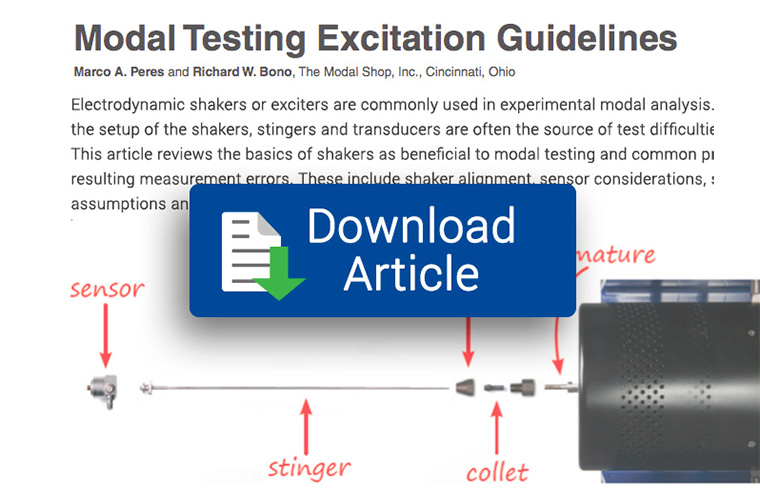Main Menu
- Home
- Product Finder
- Calibration Systems
- Calibration Services
- Digital Sensing
- Industrial Vibration Calibration
- Modal and Vibration Testing
- Non-Destructive Testing
- Sound & Vibration Rental Program
- Learn
- About Us
- Contact Us
 Electrodynamic shakers
or exciters are commonly used in experimental modal analysis. The practical aspects regarding the setup of the shakers, stingers and transducers are often the source of test difficulties and avoidable measurement errors. This article reviews the basics
of shakers as beneficial to modal testing and common problems associated with setup issues and resulting measurement errors.
Electrodynamic shakers
or exciters are commonly used in experimental modal analysis. The practical aspects regarding the setup of the shakers, stingers and transducers are often the source of test difficulties and avoidable measurement errors. This article reviews the basics
of shakers as beneficial to modal testing and common problems associated with setup issues and resulting measurement errors.
A system setup for modal testing includes several measurement and test components around the structure under test itself. Typically one or more electrodynamic shakers (also called modal exciters) are employed to provide a known excitation input force to the structure. Dynamic transducers are used to measure the input excitation force and the resulting vibration responses. Once data are acquired, the resulting frequency response functions (FRFs) obtained by the data acquisition system are stored for post processing calculations, data reduction, curve fitting, and mode extraction.
In addition to all the recent advancements on the analysis side, new methods and algorithms for modal parameter extractions, the challenges of acquiring good data for experimental modal analysis are still very real. The old adage “garbage in, garbage out” becomes more present than ever if care and attention are not paid to some of the basic practical aspects behind test setups.
Click above to download the full article...